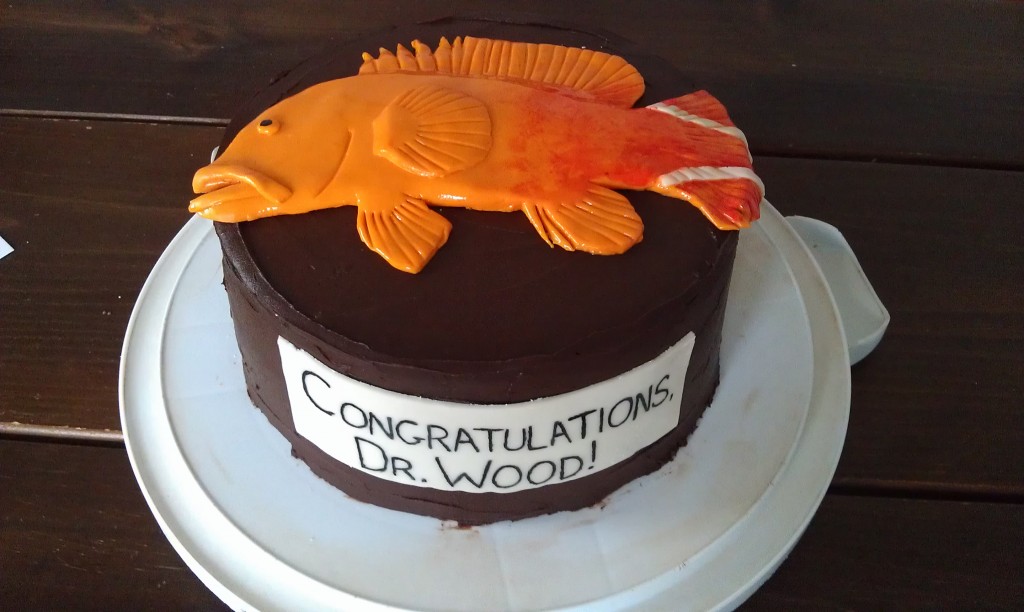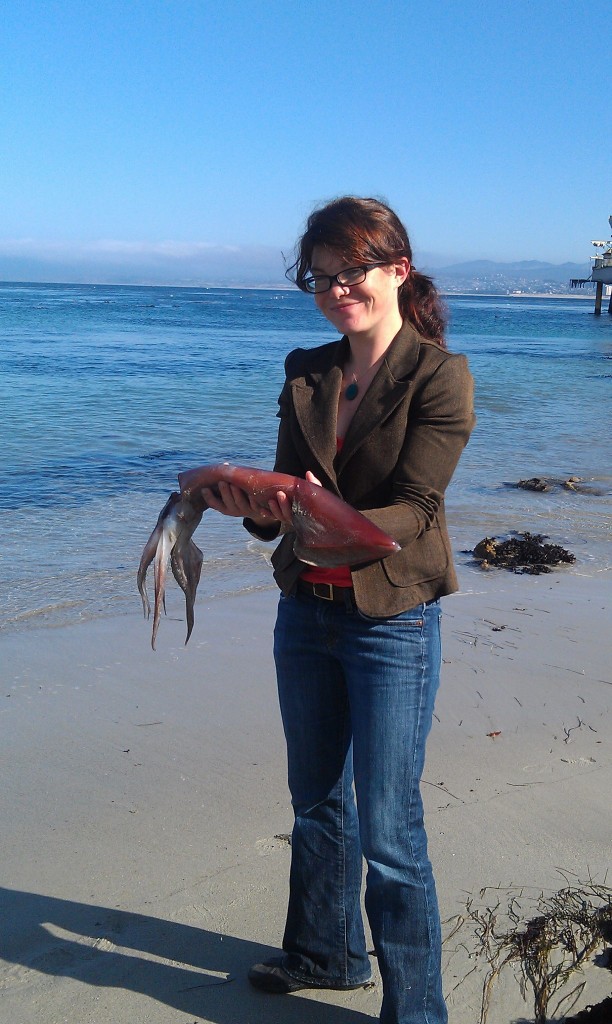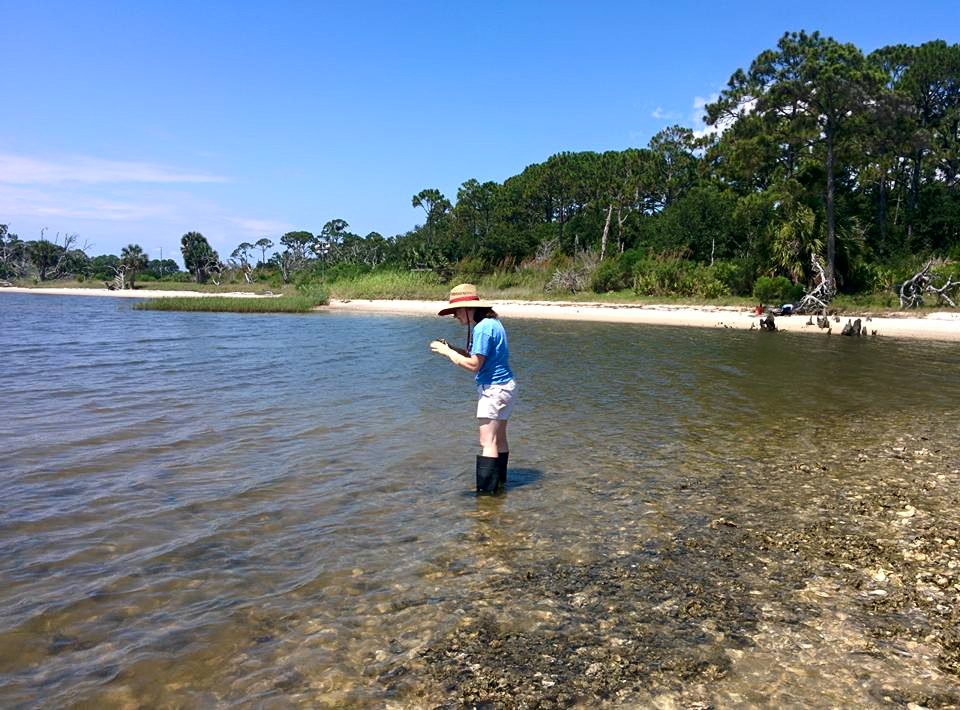by Chris Patrick
Before I was the science writing intern at the Smithsonian Environmental Research Center (SERC), I volunteered in SERC’s marine invasions lab sorting white-fingered mud crabs with Monaca Noble, researcher and public relations coordinator. The mud crabs are tiny, ranging from the size of a tick to the size of a quarter. They reek of preservative alcohol, and milky mittens glove their pincers. While sorting, I met Carolyn Tepolt, a postdoctoral fellow at SERC.
34-year-old Tepolt (which sounds like a fusion of “teapot” and “catapult”) offered me homemade lemon bars the day we met. Working together, we discovered we were both undergraduates at the College of William and Mary—we lived on the same floor of the same freshman hall 14 years apart. Tepolt visited the lab to learn the crab-sorting process because this summer she will use genetics to study how mud crabs are adapting to their parasite, Loxothylacus panopaei, or Loxo.
Loxo is a free-swimming barnacle that transforms mud crabs into baby-making machines. A female Loxo swims along until she encounters the soft, vulnerable body of a recently molted mud crab. She burrows into the crab, takes over its nervous system, and forms a sac. If you pry open the apron (a flap in the crab’s underbelly) you may see a small, squishy, yellow pearl—the Loxo’s sac. As the sac grows, it props open the crab’s apron. Male aprons are shaped liked the Washington Monument, and female aprons like the Capitol Building. To fit the ballooning sac, Loxo feminizes male mud crabs, widening their aprons to resemble Capitol Buildings. Eventually, a male Loxo fertilizes the sac and, in time, wee Loxo babies spew forth.
Where Loxo is invasive, like in Chesapeake Bay, it may parasitize up to 90 percent of an area’s mud crabs. Where it’s considered native, like Florida, rates are lower—usually 10 percent or less. Why? Florida crabs have had plenty of time to adapt to Loxo. Loxo is newer in Chesapeake Bay (it was first detected in 1964) and its mud crabs are now experiencing the same selective pressure Florida crabs experienced.
SERC researchers have tracked Loxo’s abundance in Maryland mud crabs since the 1990s. Working with the Parasite Project team, Tepolt wants to find out how Chesapeake Bay crabs are adapting to their parasite. She wonders if they’re evolving to be like crabs in Loxo’s native range.
While earning her doctorate from Stanford University, Tepolt studied green crab adaptation using genetics. She’s doing something similar with mud crabs this summer. Tepolt will collect mud crabs from nine sites along the East Coast.
In lab, she’ll infect unparasitized crabs with Loxo and withdraw genetic material called messenger RNA from their gills. Messenger RNA, mRNA, gets its name from its job shuttling information from genes in DNA to protein-making machinery. The mRNA in a tissue tells researchers what genes are “turned on” and producing proteins. Tepolt will compare gene activity in three groups of crabs: those from where Loxo is native, where Loxo is invasive, and where Loxo is absent (including New Jersey, Massachusetts, and New Hampshire).
She’s looking for signs of adaptation. “It’s such a strong selective pressure if you’re getting 90 percent of your population castrated,” said Tepolt. “That’s not good for reproduction.”
Extracting mRNA from crabs is straightforward, but tedious. Tepolt first preserves all RNA in a tissue sample with a special salt solution. Except she only wants messenger RNA—other types won’t tell her about gene activity. The mRNA has a long tail of adenines, one of the subunits of DNA and RNA, so she pulls out everything with this adenine tail and sends it to a sequencing company.
The sequencing company sends back a “ridiculous amount of data,” she said, giving her the order of nucleotides for every mRNA strand. Using software, Tepolt pieces the mRNA strands together for each crab. Because mRNA corresponds to genes of DNA, Tepolt can use the mRNA to identify what genes were active in an individual at the time of sampling. Differences in gene activity between the three mud crab populations hint at adaptation under the selective pressure of Loxo. She can also look at the nucleotide order of genes, to see if parasitism altered the sequence itself. Tepolt thinks gene sequences and activity in crabs from Loxo’s invasive range may be starting to resemble the gene sequences and activity in crabs from Loxo’s native range.
But Tepolt doesn’t bury science in the lab. Before starting her fellowship, Tepolt took sixth months to solo hike 2,500 miles of the Pacific Crest Trail’s 2,650. (She skipped two sections because dry lightning started fires near the trail.) She wanted a break from science after the stress of graduate school, but the novelties of the trail proved too alluring for her curious mind. She couldn’t put science away.
“I wondered about the amazing colored bands of dirt and what’s doing that,” said Tepolt. “There were mariposa lilies in five or six different colors and I thought, Is that a mutation? I could do a genetic study!”
Tepolt finds science in food too. She launched a food science blog, Science Fare, with other graduate students from Stanford. In one post, Tepolt describes how to make macaroni and cheese with the same special salt solution she uses to preserve RNA in the lab, sodium citrate. She includes the caveat, “The Science Fare Team does not in any way endorse eating things you find in the lab. This is usually a bad idea. Don’t do this.”
She was even on an episode of Top Chef Masters. The show paired graduate science students, like Tepolt, with contestant chefs to prepare dishes illustrating a scientific concept. In her audition video, Tepolt employs “experimental muffins” to explain the difference between baking soda and baking powder.

Tepolt put gummy worms and chocolate-covered sunflower seeds into this “parasitized” flagtail grouper cake. (Carolyn Tepolt)
I don’t know if Tepolt wears an apron while cooking, baking, or candy making. But I like to imagine that she does—a loose kinship with the crustaceans whose aprons house the offspring of a castrating parasite.




